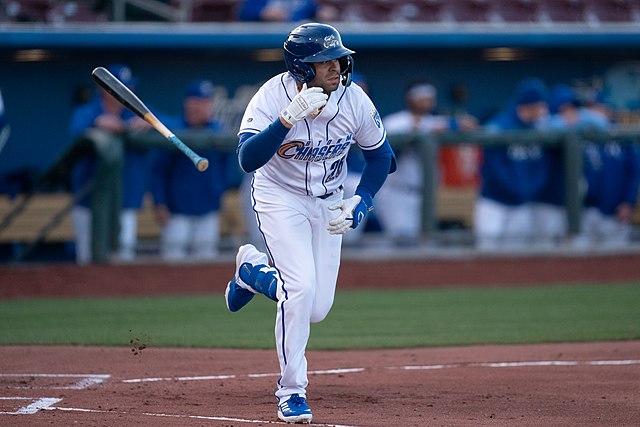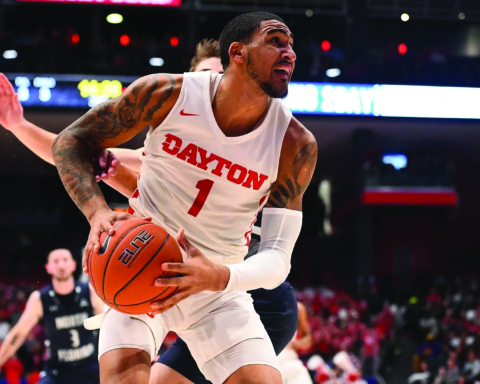BY COLIN BISH, STAFF WRITER
Photo Courtesy of Wikimedia Commons
The National Collegiate Athletic Association’s (NCAA) rules on “unsportsmanlike acts” continue to show that many rulemakers remain out of touch with the evolving game of baseball.
On Feb. 25, with his team down 8-4 to Nebraska, Grand Canyon senior utility player Tyler Wilson smashed a grand slam to tie the game. However, Wilson made a grave mistake during his home run trot.
After his swing, Wilson carried his bat about halfway up the first base line before tossing it up in the air. By the time he rounded the bases, the home-plate umpire had already ejected him.
Without Wilson, one of GCU’s best hitters, the Antelopes lost to Nebraska 10-8. Wilson’s replacements in the lineup went 0-2 in batting attempts.
The NCAA is no stranger to creating pointless rules to determine how college kids can celebrate big moments. While MLB has attempted to evolve by encouraging and promoting celebratory acts like bat flips, the NCAA remains stuck in the early 1900s.
Two of the NCAA’s baseball rules, 5-2-d and 5-17, address unsportsmanlike acts.
Rule 5-2-d states that teams can not use celebratory props on the playing field after a home run, scoring play or at the end of a half-inning. This rule gained more attention during 2021-2022 when a Virginia Tech player would slam the “Home Run Hammer” on the field of play near the Hokies’ dugout with his team.
Rule 5-17 supplements the previous rule by specifying unsportsmanlike acts by players or teams. Banning props, signs, and bat flips near or toward opponents can “reduce potential acts of unsportsmanlike conduct directed at opposing teams or players.”
Now, these rules make sense. While I am all for bat flips and pitchers’ primal screams after a big inning-ending strikeout, there should be a line in the sand that separates adrenaline-filled reactions from disrespecting acts.
However, the NCAA and the umpires working to enforce their rules can’t correctly enforce them. Going back to the GCU-Nebraska game, Wilson could have flipped the bat near the Nebraska dugout. But nothing on video showed any ill intent toward the opposing dugout.
If a player does something disrespectful in a celebratory manner, eject them, but only if that act blatantly disrespects the opponent. Wilson’s bat flip did not appear blatant, so why make a judgment call that drastically changes the outcome of the game?
MLB consistently promoted the statement, “Let the Kids Play,” to market their exciting young players to a younger audience. Although I have been very critical of MLB commissioner Rob Manfred, I respect him for trying to drive baseball out of its age-old customs and into a flashier, more exciting image.
Why does the NCAA not do the same? It would be a much easier ordeal for them than MLB, considering college baseball’s stars are young adults and its majority audience is between ages 18 and 34, according to Christina Gough’s study, “Public interest in college baseball in the U.S. 2022, by age.”
Whatever the case, college baseball’s rules against bat flips must go. They ultimately discourage the energy and excitement that college baseball is widely known for.
bishcj22@bonaventure.edu








